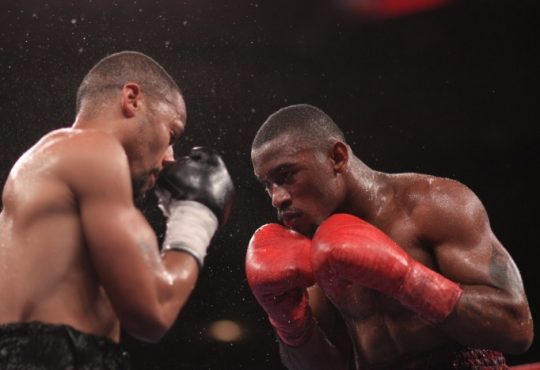
Mastering the Flicker Jab in Boxing: A Strategic Weapon
You ever throw a jab that felt fast but somehow still landed late? Yeah—been there. That’s where the flicker jab comes in. You’ve probably seen it, maybe even felt it if you’ve sparred someone slicker than they look. It’s that weird, almost lazy-looking jab that snaps out with zero warning and ruins your rhythm.
The flicker jab isn’t just a feint or a speed trick—it’s a rhythm disruptor. And lately, it’s popping up more and more in U.S. boxing gyms, especially among fighters who rely on reflexes and timing over brute force. You’ll see why it’s misunderstood, where it actually shines, and how it plays with timing, shoulder snap, and mental pressure.
Let’s break it down from the inside out.
How the Flicker Jab Disrupts Rhythm
You ever spar someone who just won’t let you settle into your groove? One second you’re lining up your cross, next thing—pop!—they catch you with this weird, snappy jab that looks like a feint but somehow still scores. That’s the flicker jab doing what it does best: wrecking your rhythm before you even realize it’s happening.
What I’ve found is, it’s less about power and more about timing sabotage. The flicker jab throws off your reads, stalls your reactions, and messes with your internal clock. It’s not meant to hurt—it’s meant to interrupt.
Here’s how you can use it to control tempo and break your opponent’s rhythm:
- Lead with randomness
Don’t jab on the beat. Try slipping it in half a second earlier or later than expected. Disrupt cadence. - Keep the shoulder busy
Give them visual static. Small shoulder twitches before the jab create false triggers—they’ll bite early. - Snap it, don’t throw it
It’s not a traditional jab. Snap from the shoulder with minimal telegraph. Think whip, not push. - Layer it with feints
Mix in misdirection jabs that never fully commit. Your goal’s confusion, not connection—at first. - Reset immediately
After the flick, pull back fast and return to neutral. That millisecond pause keeps them guessing.
Honestly, once you get the rhythm of breaking rhythm, it becomes addicting. You’ll start seeing their reactions lag by just enough—and that’s your green light.
Step-by-Step: Mastering the Flicker Jab
If you’ve ever tried adding a flicker jab to your game and it felt more awkward than slick—don’t worry. Been there. It’s not something that just clicks overnight. The flicker jab looks effortless when done right, but it takes serious intentional drilling to get that snappy, off-tempo feel. Here’s how I usually break it down in the gym:
1. Start with shadowboxing – slow and snappy.
- Focus on shoulder snap, not arm push.
- Throw the jab from different rhythms—double tap it, pause then fire, fake it halfway.
- Tip: Use a mirror. Watch how subtle your shoulder twitch can be while still selling the motion.
2. Move to the heavy bag.
- Keep the jab light and fast. Don’t try to smash it.
- Alternate between flickers and stiff jabs so you feel the contrast.
- What’s worked for me: Count 20 flickers in a row with no pattern—mess with your own timing first.
3. Mitt work for reaction and disguise.
- Have your coach call it late or randomly mid-combo.
- Practice mixing in feints that look like flickers—and vice versa.
- This builds trust in the snap, so you stop second-guessing the motion.
4. Jab-only rounds with a partner.
- Just play jab chess. Use flickers to bait, then step in with a real one.
- Watch their reactions. If they start freezing or flinching? You’re doing it right.
In my experience, the flicker jab really starts cooking once your lead hand moves like it’s on its own brain. So drill until it feels less like a punch—and more like a thought.
Common Mistakes and How to Fix Them
Alright, let’s be real—most flicker jabs fall apart before they even leave your shoulder. I’ve seen it (and done it) way too many times: what should be a sharp, rhythm-breaking snap turns into a sloppy reach or, worse, a telegraphed poke that sets you up to eat leather. If your flicker jab isn’t landing—or worse, getting you countered—chances are it’s one of these:
- Lazy shoulder snap
If your shoulder’s not doing most of the work, it shows. A limp arm jab kills the illusion. Fix: Drill jab-only rounds with a mirror. Watch your shoulder—not your hand. - Telegraphing with the lead hand
You might be pulling your elbow back or flexing your wrist before the shot. (Yeah, it’s subtle, but good opponents see it.) Fix: Practice “dead arm” drills—flick it straight from a relaxed guard. - Dropping the hand after the jab
I see this constantly. You flick and forget. Fix: Reset high and fast every single time. That sharp recoil is part of the flick. - Bad timing or predictable rhythm
Throwing on a steady beat makes the jab easier to read. Fix: Work off-tempo—think jazz, not marching band.
When to Use the Flicker Jab in Real Fights
There’s a rhythm to every fight—and if you can disrupt it early, you’ve already taken control. That’s where the flicker jab earns its paycheck. In my experience, it’s not a power move—it’s a mental one. You’re not trying to land big, you’re trying to mess with their read, steal their beat, and make ’em hesitate.
Best times to use it? Here’s what’s worked for me:
- Opening the round
First 10 seconds? Set your tempo, not theirs. A few flickers force them to react, not act. - Establishing range without overcommitting
You’re feeling them out. The flick jab is your probe. Safe, fast, annoying. Think of it as your “rangefinder with attitude.” - Before launching a real combo
Throw two flickers, watch them freeze or over-slip, then boom—step in with a clean 1-2. You’ve softened the lane. - To shut down a rhythm fighter
Someone who lives on timing? Feed them broken rhythm. Flicker-jab just off their beat, and their whole system short-circuits.




